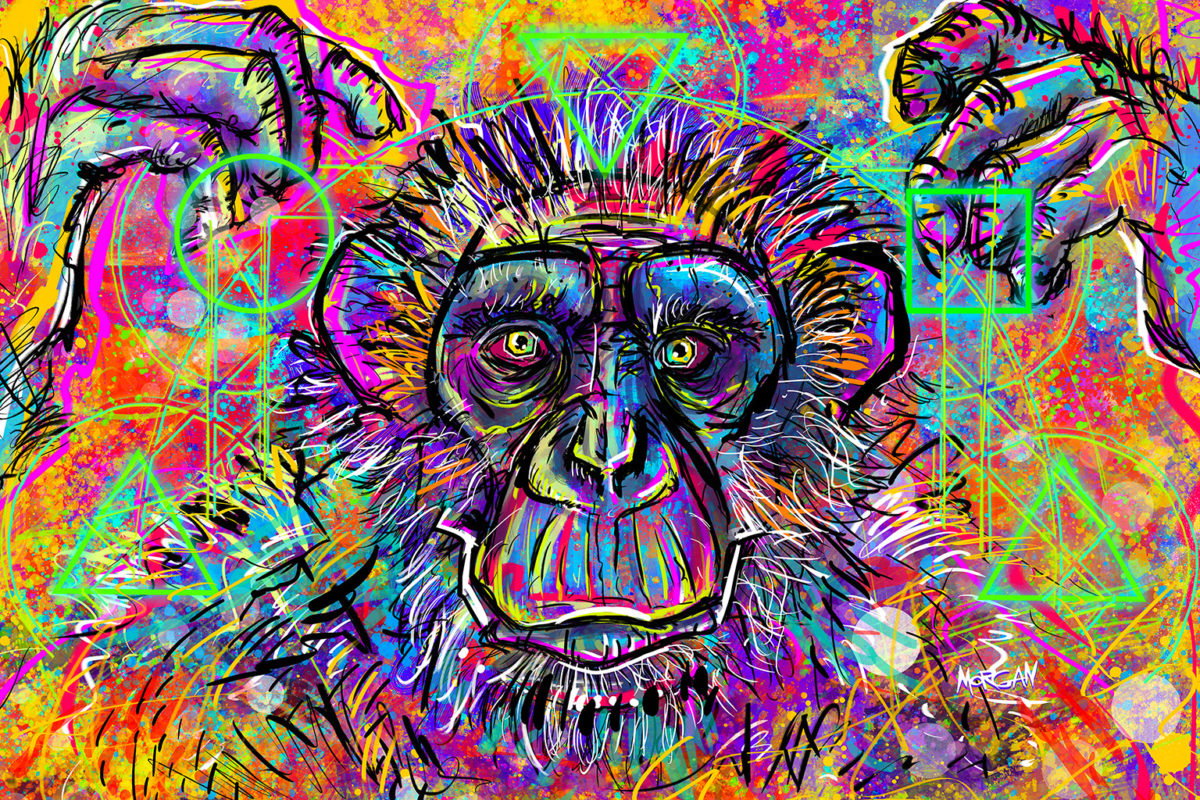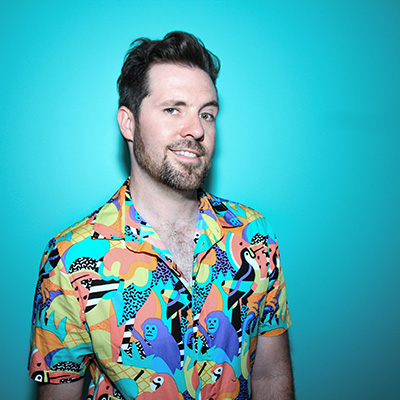Many of the visuals we’re used to seeing in conservation are ones of despair: forests being torn down for palm oil production, pangolins and rhinos being slaughtered for the scales and horns, blue glaciers calving into the ocean, fires destroying majestic trees, and vigils to environmental defenders slain for their efforts to protect the planet.
Morgan Lee Richardson, a Los Angeles-based artist, takes a different approach. He creates images of wildlife with shockingly bold colors: A mother white rhino with her calf in a full spectrum of psychedelic colors, a collage of multi-hued pangolins, and a gray wolf painted in cool blue and purple tones.
“In my work, the first thing that jumps out at viewers is my use of color,” Richardson told Mongabay during a January 2021 interview. “My personality, my sense of style, and my artwork are all very colorful – I’ve heard it described as a ‘kick in the face.’
Richardson — whose artwork has appeared widely from Disney to Nickelodeon to Thundershirts — uses his “kick in the face” style to “introduce people to the amazing biodiversity of our planet.”
“By relating to my artwork, people can become aware of endangered creatures and man-made issues which negatively impact the environment,” he explained. “If I do my job correctly, my artwork can inspire people to make changes in their lifestyle that hopefully benefit wildlife and wild places.”

“Just as astounding orators motivate an audience with words, I speak in a language of color, constructed to galvanize a generation of young people in support of our fellow (non-human) Earthlings. Data and impassioned speeches can only go as far as the people who are willing to pay attention to it. The more Creatives we can get to share the message through their work, the more people will pay attention. Get the attention of enough people and we will have a legitimate movement behind us.”
Beyond raising awareness and inspiring people, Richardson uses his art to catalyze support for conservation causes and organizations, which have included the International Rhino Foundation, Save Pangolins, and the Wild Tomorrow Fund, among others.
He says new approaches are needed to reach and engage the next generation since it is they who will determine the fate of the species with which we share the planet.
“If we want the future change-makers to care about conservation, then we need to start creating a framework for making change,” he said. “We are not the future. Most people reading this are not the future of conservation, but what we can do is better prepare Gen Z and Gen Alpha to be less reliant on palm oil, disposable plastics, fossil fuels, etc. They can only carry the flag into battle if they are passionately informed.”

“The key to connecting with a new audience is to meet them in a place that is friendly and familiar,” he said. “I personally believe in showcasing how breathtaking nature can be, not bludgeoning viewers with traumatic images of dead animals.”
Richardson also believes that wildlife conservation needs to become more inclusive if it hopes to thrive into the future.
“Conservation is for everyone everywhere,” he said. “Blind spots in the conservation community echo those of society as a whole … much like everything else in this world, there are racial, gender, and class divides in conservation. Antiquated notions of colonialism are still present. The most successful conservation groups work alongside and empower indigenous communities in order to protect wildlife and ecosystems. Fortunately, we are starting to see a shift but I’d personally love to see greater diversity in the operational leadership of many non-profits, including on boards of directors.”
Richardson spoke about his views and use of art during an interview with Mongabay’s Dave Martin.


